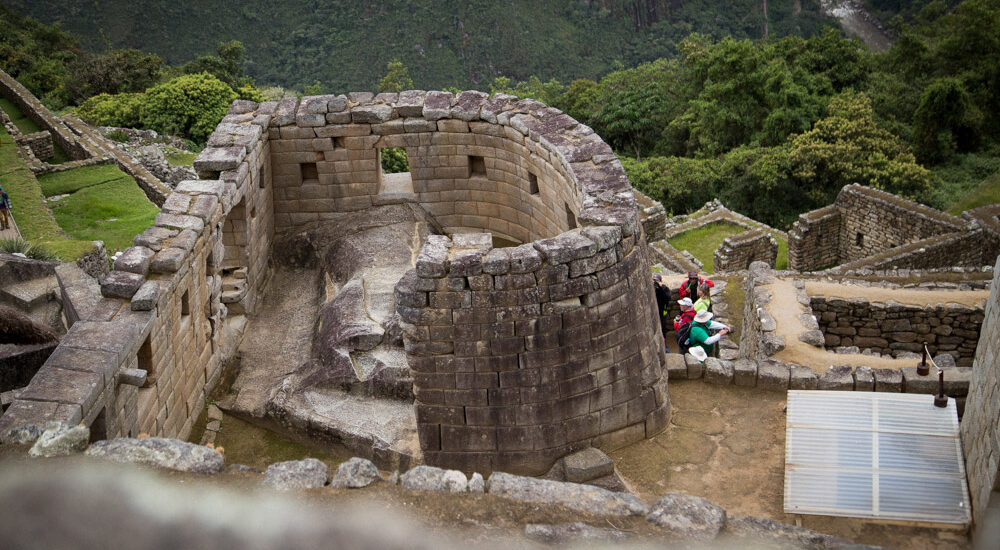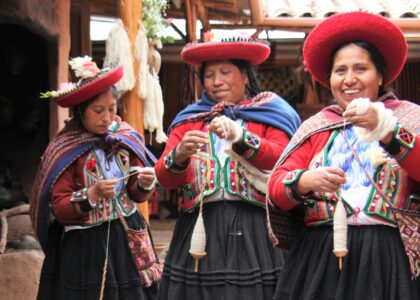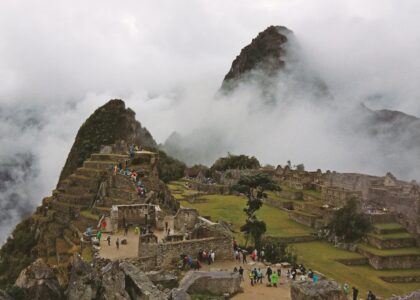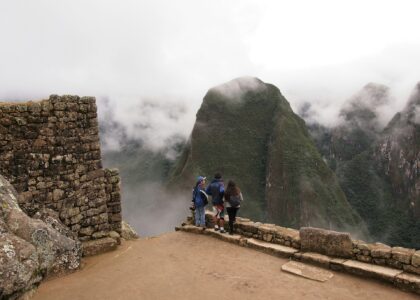Sitting high in the Andes, the lost city of Machu Picchu has captured the imaginations of travelers from across the globe. As one of the world’s most iconic landmarks, it is filled with tales of Incan glory and architectural marvels. As we discover the heart of this ancient citadel, we will take a look at the top eight essential Machu Picchu attractions that have mesmerized millions. Whether you’re a history buff, an adventure seeker, or simply wish to be in awe of nature’s grandeur, a trip to Machu Picchu promises a journey of a lifetime.
1. The Historical Main Entrance
The main entrance is your gateway to Machu Picchu’s wonders. It’s not just an entry point but a step back in time into the rich history of Incan culture. Before you leave to explore the other Machu Picchu attractions, don’t miss the chance to get a special stamp on your passport right at this entrance—a memorable keepsake of your visit.
2. The Intihuatana Stone
The Intihuatana Stone is solid proof of ancient Incan ingenuity. This ancient sundial was carefully carved with four distinct sides and played a pivotal role in the Inca calendar. Beyond just keeping time, it held deep spiritual importance, aligning celestial events with earthly ceremonies. Its precision shows the Incas’ advanced understanding of astronomy and their connection to nature’s cycles. When exploring Machu Picchu attractions, this stone offers a look into the sophisticated world of Incan timekeeping and their religious belief system.
3. The Sun Gate
The Sun Gate originally served as a security checkpoint for everyone entering Machu Picchu. Now, it is a must-see attraction for anyone visiting this historic site. It offers a breathtaking panoramic view of the ancient city below it, creating the perfect location for taking memorable pictures. As you approach the Sun Gate, you will see a view that perfectly frames the sprawling ruins against the backdrop of the Andean mountains.
4. Temple of the Sun
The Temple of the Sun is a must-see Machu Picchu attraction that once held a significant religious role in Incan Culture. Only the elite and those high in religious ranks could enter this sacred space. Its design mirrors the sun temple in Cusco, the Inca capital, further proving its religious importance.
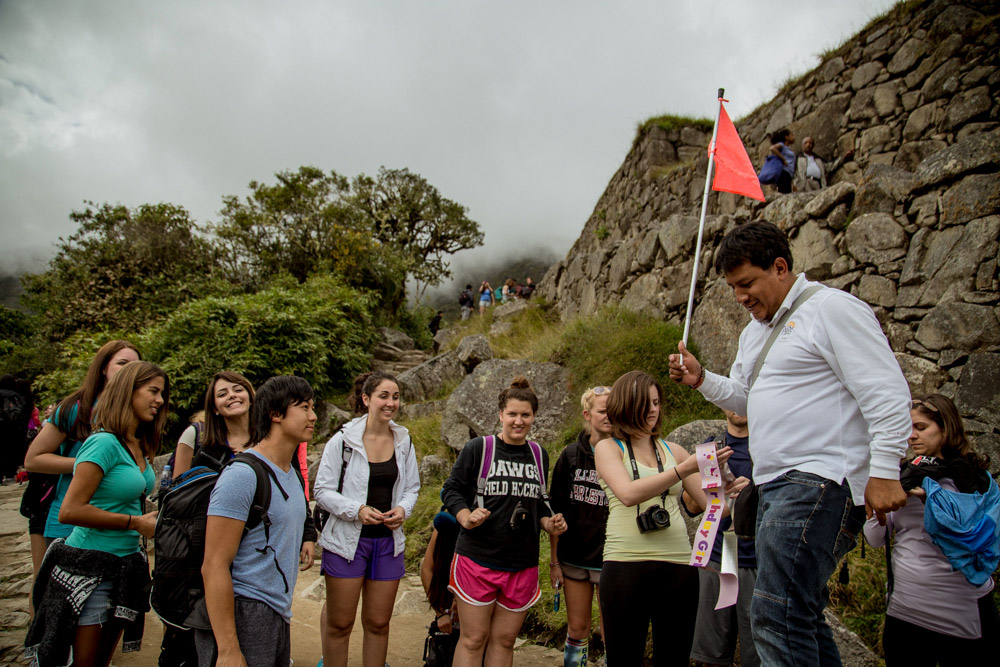
5. Llamas and Alpacas
Llamas and alpacas were crucial animals to the Inca civilization. They served as primary livestock when horses, goats, and sheep weren’t easily available in ancient Peru. Llamas are larger and are often used as pack animals. They played a vital role in transporting goods across the Incan empire. Alpacas, on the other hand, are smaller and fluffier. They were highly valued for their soft wool, which was a staple for making warm clothing. When you visit Machu Picchu today, you’ll frequently encounter these animals grazing amidst the ruins. To easily spot the difference between them, remember that llamas are taller with elongated faces, while alpacas have a more compact build with a smushed face. Both are deeply embedded in Andean culture and add to the authenticity of the Machu Picchu experience.
6. The Royal Tomb
The Royal Tomb, located beneath Machu Picchu’s Temple of the Sun, is a natural cave that has long intrigued archaeologists. Despite its name, no mummies or royal remains have ever been discovered here, leading to various speculations about its purpose. Some theories suggest it served as a sacred burial site for Incan royalty, while others believe it held religious significance for ceremonial rituals. The finely carved niche within further fuels the mystery, making it one of the must-see Machu Picchu attractions.
7. Incan Agricultural Terraces
The Incas showcased their agricultural brilliance through tiered terraces built into Machu Picchu’s mountainside. These stone-stepped platforms prevented soil erosion and optimized irrigation, making them crucial for crop cultivation in the steep Andean terrain. These terraces prove the Inca’s innovative approach to farming, turning a challenging landscape into a flourishing food source.
8. Huayna Picchu
Huayna Picchu translates to ‘young peak,’ and it towers over the Machu Picchu ruins. It offers adventurous visitors unparalleled panoramic views of the entire site and the weaving Urubamba River below. Reaching the summit is quite difficult even for experienced hikers and requires navigating steep paths, often referred to as the ‘stairs of death.’ However, for those who choose to climb, there are rewarding views at the top and a deep sense of accomplishment, making the ascent a sought-after adventure for many. A good fitness level and a head for heights are prerequisites for those considering the climb.
Experiencing Machu Picchu Attractions with Explorify
Machu Picchu isn’t just another tourist destination. A visit to this site is like taking a trip back through history. As you walk through these Machu Picchu attractions, you have the unique opportunity to trace the steps of a culture that thrived in both engineering and spirituality. You don’t only get to witness Machu Picchu; you get to experience it. But reading about it isn’t the same as being there. To truly understand the enchantment of this ancient location, you need to see it, touch it, and breathe it in. Let Explorify guide your way, ensuring you capture the essence of every moment. Don’t just dream about the wonders of Machu Picchu – come, explore, and create memories that will last a lifetime with Explorify.


